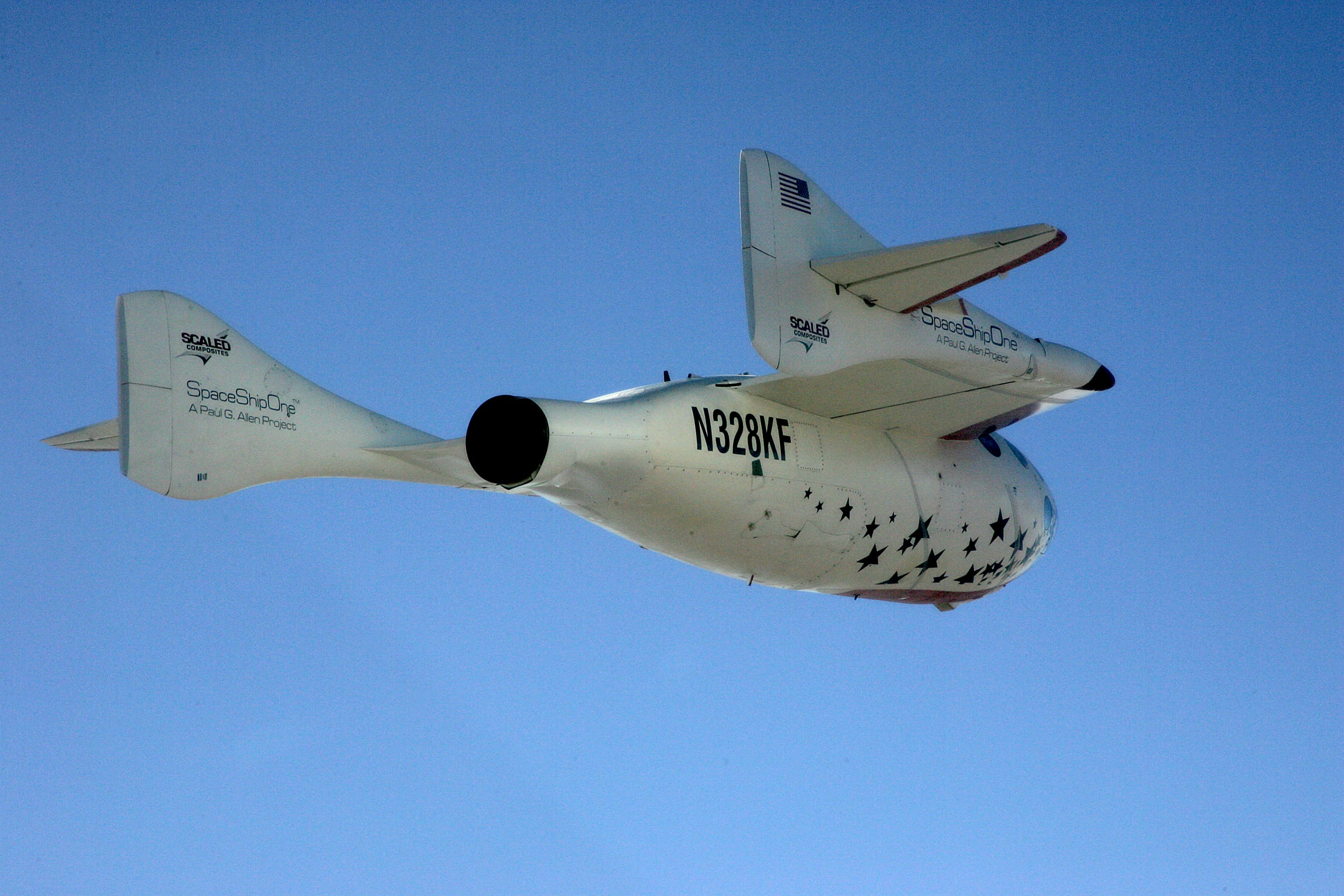
For the entirety of the 20th century, from Yuri Gagarin to Alan Shepard to Sally Ride and Mae Jemison, humans that traveled outside of Earth’s atmosphere did so in spacecraft owned and created by a government. Spanning NASA heroes to the pioneers of Roscosmos to the CNSA in China, before 2004, boldly going into space was in many ways an act of statecraft. Although civilians joined the various space agencies over the decades, the earliest astronauts were rooted in a military tradition.
Twenty years ago, all of that changed, as a new spaceflight era was sparked by the launch of SpaceShipOne, the first private sub-orbital spacecraft ever. Today, non-government space launches and independent aerospace companies are the norm — from Elon Musk launching cars into orbit with SpaceX to William Shatner hitting the final frontier with Blue Origin. In short, we’re in the midst of a new space race. And it all started twenty years ago with SpaceShipOne.
The Road To Virgin Galactic

Today, we tend to think of SpaceShipOne as the first ship in mogul Richard Branson’s growing Virgin Galactic fleet. But, at that time, SpaceShipOne was created by Scaled Composites, aerospace engineering legend Burt Rutan’s private aerospace firm, which was partially funded by Microsoft’s Paul Allen. Both Allen and Rutan also co-founded Mojave Aerospace Ventures, which managed the basic logistics of SpaceShipOne. Based in Mojave, California, Rutan and Allen’s goal was relatively simple: Use existing flight technology to allow suborbital spacecraft to launch from the back of a conventional airplane.
Because it launched from a plane (“White Knight”) and landed like a plane, in a way, SpaceShipOne was a kind of spiritual step-cousin NASA’s space shuttle, though not focused on actually entering orbit. That’s because everything about SpaceShipOne was focused on creating a passenger-oriented experience. As Rutan put it in an op-ed for National Geographic in 2004 he wanted to prove “that privately built spaceships could achieve what the U.S. government has not: develop technology to make spaceflight affordable and safe for the masses.”
“That same sophisticated design ... set the bar for repeatability, accessibility, and experience for generations to come.”
After the third manned flight — flown by self-taught pilot Mike Melvill — on October 4, 2004, Rutan secured $10 million from the Ansari X Prize. Shortly thereafter, Richard Bronson acquired the venture, and Virgin Galactic was born. At that point, SpaceShipOne turned the tinkering of billionaires into a viable movement that changed the landscape of spaceflight. As Michael Lopez-Alegria, former president of the Commercial Spaceflight Federation told Space.com in 2014, “I would not be surprised if, 50 years from now, people look back and that will be identified as the moment that the era of commercial spaceflight started.”
Echoing that sentiment, Mike Moses the current president of Spaceline at Virgin Galactic tells Inverse, “SpaceShipOne heralded a new era of human spaceflight that still inspires us today.”
The Innovation of SpaceShipOne

While it may be hard for the average person to get too excited about billionaires throwing a bunch of money to figure out how to get into space, one thing that remains inspirational about SpaceShipOne is its unique out-of-the-box approach to suborbital flight.
“It was a pioneering feat of engineering,” Moses tells Inverse.“That same sophisticated design even today has some influence in our next generation of Delta spaceships, which will set the bar for repeatability, accessibility, and experience for generations to come.”
The feat of engineering Moses refers to is twofold. First, SpaceShipOne used hybrid rocket motors to leave the atmosphere, but, like a painting out of some kind of pulpy science fiction magazine, its fuel tank was integrated fully into its fuselage. This elegance and simplicity means that with SpaceShipOne form and function were the same thing. Unlike the NASA capsules of the 20th century, SpaceShipOne’s short-term purpose meant that its design and appearance oddly resemble our shared visions of what a spaceship should look like.
Adding to its sci-fi mystique, SpaceShipOne used a “feather system” with its rear wings. Basically, this means that in order to safely reenter the atmosphere after its brief flights (and not burn up), SpaceShipOne rotated its rear wings to optimize its aerodynamic shape. This idea came from Rutan who was inspired by the shape of a shuttlecock from badminton.
SpaceShipTwo and The Legacy of SpaceShipOne

In addition to inspiring competition from other space agencies like Blue Origin and SpaceX, the Virgin takeover of Scaled Composites and Mojave Aerospace Ventures has resulted in its own self-sufficient space empire. As Moses says, “Two decades later, the core principles behind SpaceShipOne’s innovation and design can be seen in SpaceShipTwo — Virgin Galactic’s pathfinding spaceship VSS Unity.”
Moses points out that the VSS Unity has, to date, taken 37 passengers to space. Presumably, this number will continue to grow as the technology becomes more affordable to those of us who aren’t investors in major tech companies or happen to be sitting on billions of dollars.
Cynicism aside, for those who love real-life spaceships, there remains something unique about the way SpaceShipOne and SpaceShipTwo look — something that stands in stark contrast from what had come before. When the original SpaceShipOne made it into the Smithsonian's National Air and Space Museum in 2005, it stood out.

Unlike the stark gunmetal military feeling of a Mercury capsule or the spider-like Lunar Module of the Apollo landing, SpaceShipOne looks like a childlike dream of a spaceship, a notion of what human ingenuity can accomplish when it doesn’t have a political agenda. SpaceShipOne may not be the best or most famous spaceship in the history of spaceflight, but in a hundred years, we will continue to look back on this as a moment of divergence — when space wasn’t claimed in the name of a nation. In 2004, Mike Melvill held a sign that triumphantly declared “SpaceShipOne, Government Zero.”
Twenty years later, we’ve seen various governments around the world become reliant on private spacecraft for various space missions great and small. This is the world that SpaceShipOne built. We’re just living in it.







